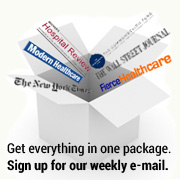Many medical, dental, and veterinary practices have multiple facilities and parts of the business operating on several different software systems. For example, there are many different electronic health records (EHR) and practice management systems (PMS) across numerous facilities. Similarly, many healthcare provider organizations use different systems for different specialties. This fragmentation often occurs with inorganic growth models and technical reasons.
In these situations, the questions that are typically asked include should we migrate to common software or whether there is a way to more efficiently collect information across the organization. This has traditionally been a difficult decision for healthcare providers because there are many factors to consider such as costs, time to value, disruption to the business, and talent requirements.
With technologies available today, it is an easy decision to quickly create a common data platform that provides immediate returns on investment without having to change everything to operate on one software. This is even the case when the longer-term goal is to migrate to a common software.
A common data platform can be assembled in weeks to provide systematic enterprise-wide reporting, real-time performance measurements and business intelligence. It also enables the ability to automate and centralize business functions by having all of the data in one common data model. Moreover, the common data platform efficiently enables growth with simplified integration of new additions to the business.
Additional returns also come from eliminating unneeded and overpriced technologies that have historically been used to collect data from source systems. It is surprising to discover the costs of these outdated technologies that many healthcare providers have been using in these situations. It is not uncommon that hundreds to even thousands of dollars per location per month are paid to a third-party software provider that collects data from each location, even though the data stays in a raw format and is not even mapped to a common dataset. Therefore, significant manual work hours are still required to modify and normalize the data for use.
The solution to all this is to assemble a customized digital platform asset that transforms business management and operations. This is capitalized as an asset and does not impact earnings or come with outrageous ongoing monthly software costs.

Establishing a centralized digital platform is a two-to-three-month process. It starts with a design phase to determine business requirements by meeting with representatives across functional areas. Focuses of the design phase include mocking up reports and dashboards along with determining automation opportunities. The outputs of the design phase are the development plan and business case describing the benefits and investment requirements.
Building the common data platform begins with connecting all the source systems and mapping the raw data to a “Gold Layer” common dataset that is then used to streamline the business with automated reporting and processes. Outputs from the design phase are used to develop a common data platform tailored to business needs. Development begins with the prototype stage to create reports and dashboards using static data to validate key performance indicators (KPIs) and establish a solid analytical foundation. During implementation, the common data platform is connected to live data sources, automating updates to ensure accurate and real-time reporting. The final step is to implement automation features that streamline critical functions such as accounting, billing, and payroll processes.
There are several success stories with this approach. For example, a nationwide network of healthcare provider practices, operating on 30 different EHR/PMS systems, overcame major operational inefficiencies by consolidating all locations into a single, centralized digital platform. This unified solution, known at the company as the “Common Data Model” enabled systematic enterprise-wide reporting and automation of key functions like billing, doctor compensation, revenue recognition, and compliance. The results were significant revenue and profit improvements, a dramatic reduction in IT costs, improved operational efficiency, and a scalable infrastructure that supported rapid growth and higher earnings.
Omniscient Health offers a fast and effective solution with our centralized data platform. By consolidating disparate data into a single, unified system, we provide a clear and comprehensive view of your organization’s operations. This integration allows you to seamlessly manage data from multiple EHR and PMS systems, ensuring that your team has access to all the information they need in one place.
The post Rapidly Modernize by Centralizing Disparate Healthcare Systems appeared first on Becker’s ASC.


